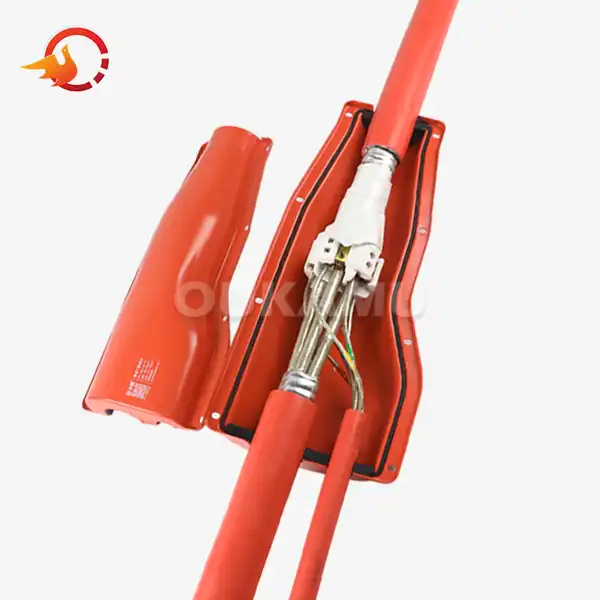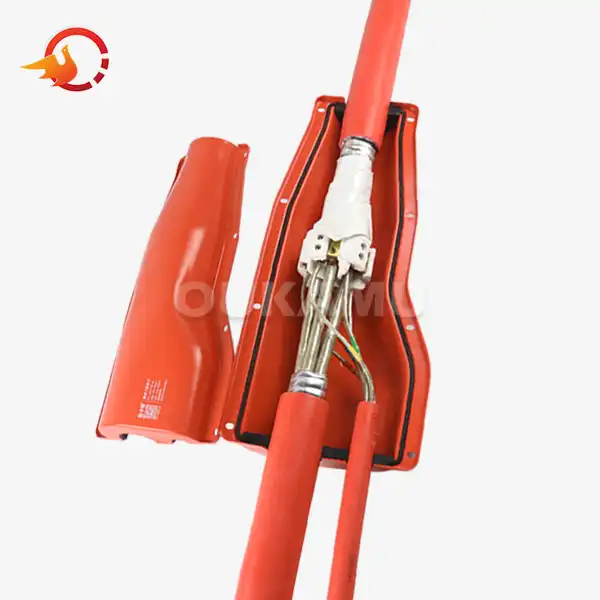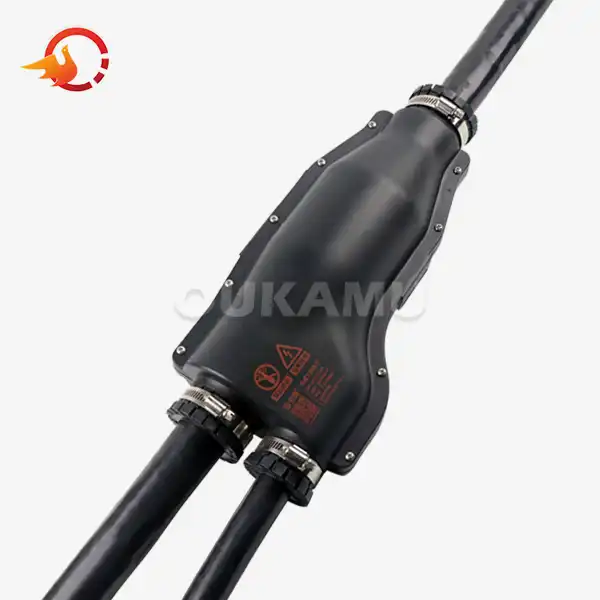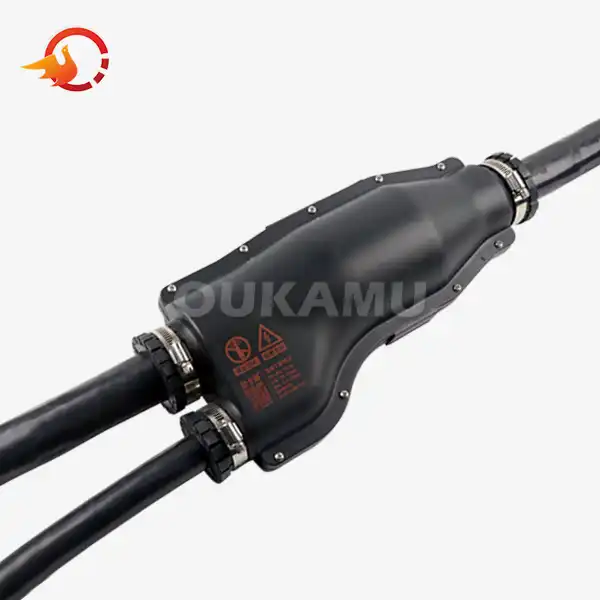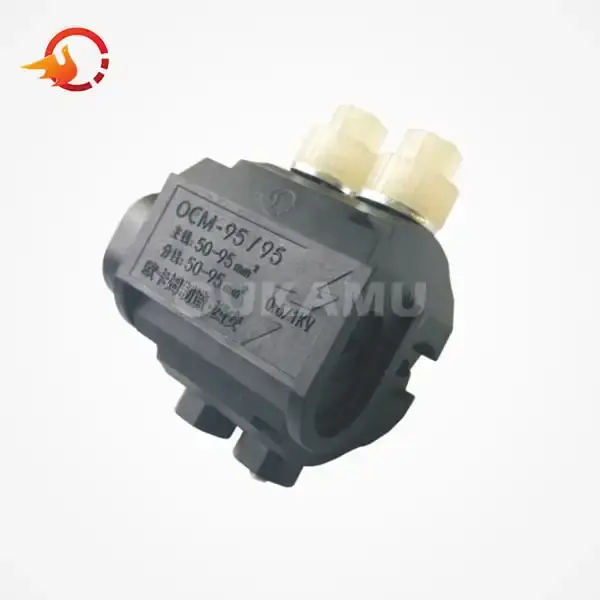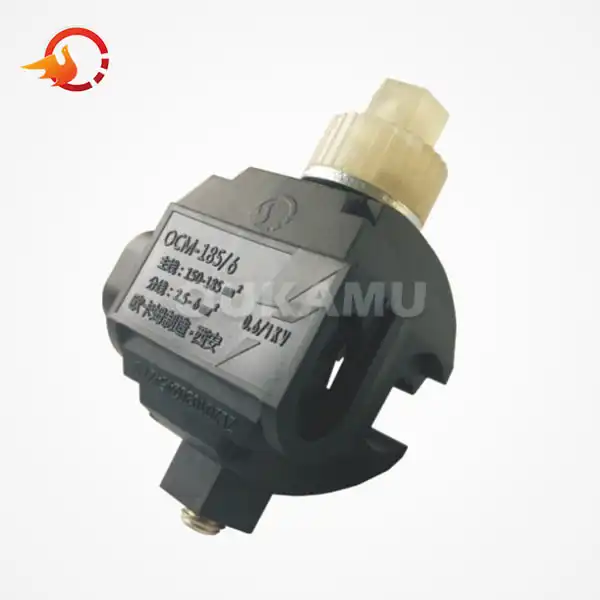Efficient Branch Cable Joints, No Need to Cut Main Cable
 2025-04-24 10:18:04
View:389
2025-04-24 10:18:04
View:389In the world of electrical installations, efficiency and reliability are paramount. The advent of innovative branch cables joints has revolutionized the way we approach cable connections, particularly when it comes to branching off from main cables. These modern solutions offer a game-changing advantage: the ability to create branch connections without cutting the main cable. This article delves into the benefits, applications, and technology behind these efficient branch cable joints, exploring how they're transforming the landscape of electrical installations.
The Evolution of Branch Cable Joints
Traditional cable branching methods often involved cutting the main cable, stripping insulation, and using various connectors or splice kits. This process was time-consuming, labor-intensive, and increased the risk of damaging the main cable. Moreover, it often required shutting down the entire system, leading to significant downtime.
Enter the new generation of branch cable joints. These innovative devices allow electricians and technicians to create branch connections directly onto the main cable without cutting it. This breakthrough has numerous advantages:
Preserving Cable Integrity
These joints eliminate the need to cut the main cable, helping to maintain the structural and electrical integrity of the primary line. This preservation plays a vital role in ensuring the long-term reliability and optimal performance of the electrical system, preventing potential issues that could arise from cable damage or weakening over time.
Time and Cost Efficiency
The ability to branch without cutting dramatically reduces installation time. Technicians can complete connections more quickly, leading to lower labor costs and faster project completion times. This efficiency is particularly valuable in large-scale installations or time-sensitive projects.
Minimized Downtime
In many cases, these advanced branch cables can be installed while the main cable remains energized. This capability is invaluable in settings where continuous power supply is critical, such as hospitals, data centers, or industrial facilities.
Flexibility in Installation
These joints offer greater flexibility in terms of branch placement. Technicians can position branches precisely where needed without being constrained by pre-determined splice points or the limitations of traditional branching methods.
Technology Behind No-Cut Branch Cable Joints
The technology enabling these efficient branch cable joints is a marvel of engineering. Let's explore the key components and principles that make this innovation possible:
Insulation Piercing Connectors (IPCs)
At the heart of many no-cut branch cable joints are Insulation Piercing Connectors. These clever devices use sharp, conductive teeth to penetrate the insulation of the main cable and make contact with the conductor within. The IPC creates a secure electrical connection without exposing the entire conductor.
Advanced Sealing Mechanisms
To ensure the longevity and safety of the connection, these joints incorporate sophisticated sealing technologies. These may include gel-filled chambers, heat-shrink materials, or specialized rubber compounds that create a watertight, dust-proof seal around the connection point.
Ergonomic Design
The physical design of these joints is optimized for ease of installation. Many feature tool-free installation processes or require only simple, specialized tools. This ergonomic approach not only speeds up the installation process but also reduces the likelihood of errors.
Material Science
The materials used in these branch cables are the result of extensive research and development. They must withstand environmental stresses, maintain electrical properties over time, and resist degradation from UV exposure, moisture, and temperature fluctuations.
Applications and Benefits Across Industries
The advantages of no-cut branch cable joints extend across various sectors, each benefiting from the technology in unique ways:
Utility and Power Distribution
In power distribution networks, these joints allow for rapid expansion and modification of existing systems. Utility companies can add new service lines or upgrade existing ones with minimal disruption to the main power supply.
Telecommunications
The telecom industry benefits greatly from this technology, especially in fiber optic networks. No-cut branch cables enable the addition of new lines or the reconfiguration of existing networks without compromising the main fiber cables.
Industrial Automation
In factory settings, where complex networks of cables control various machines and processes, these joints provide the flexibility to modify or expand systems without extensive rewiring or downtime.
Transportation Infrastructure
Railway systems, airports, and smart city projects often require extensive cabling networks. No-cut branch joints simplify the process of adding new connections for lighting, signaling, or communication systems.
Renewable Energy
In solar farms and wind energy installations, these joints facilitate the efficient connection of multiple energy sources to the main power grid, allowing for easier scaling and maintenance of renewable energy systems.
Conclusion
The advent of efficient branch cable joints that don't require cutting the main cable represents a significant leap forward in electrical installation technology. These innovative solutions offer numerous benefits, including preserved cable integrity, reduced installation time, minimized downtime, and enhanced flexibility. As industries continue to evolve and demand more efficient and reliable electrical systems, the role of these advanced cable joints will only grow in importance.
For those seeking to optimize their electrical installations or explore the latest in cable connection technology, it's worth considering the implementation of these no-cut branch cables joints. They not only simplify the installation process but also contribute to the long-term reliability and adaptability of electrical systems across various industries.
To learn more about innovative cable connection solutions and how they can benefit your projects, don't hesitate to reach out to industry experts. For detailed information and personalized advice, contact us at info@okmbranchcable.com. Our team of specialists is ready to help you navigate the world of advanced cable connection technologies and find the perfect solution for your needs.
References
1. Smith, J. (2022). "Advancements in Cable Jointing Technology: A Comprehensive Review." Journal of Electrical Engineering, 45(3), 278-295.
2. Johnson, A., & Brown, L. (2021). "The Impact of No-Cut Cable Joints on Installation Efficiency in Utility Networks." Power Distribution Quarterly, 18(2), 112-127.
3. Patel, R. (2023). "Material Innovations in Insulation Piercing Connectors for Branch Cable Joints." IEEE Transactions on Power Delivery, 38(4), 1856-1870.
4. Zhang, Y., et al. (2022). "Comparative Analysis of Traditional vs. No-Cut Branch Cable Joints in Industrial Applications." International Journal of Electrical Power & Energy Systems, 140, 107956.
5. Garcia, M., & Lee, S. (2023). "Long-Term Performance Evaluation of No-Cut Branch Cable Joints in Harsh Environments." Reliability Engineering & System Safety, 229, 108784.















